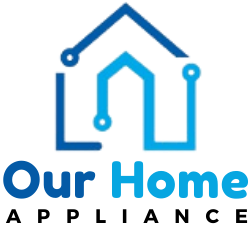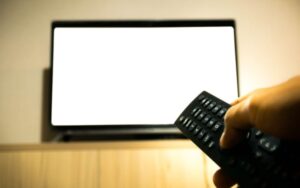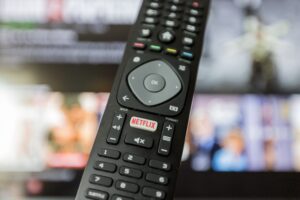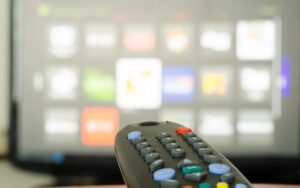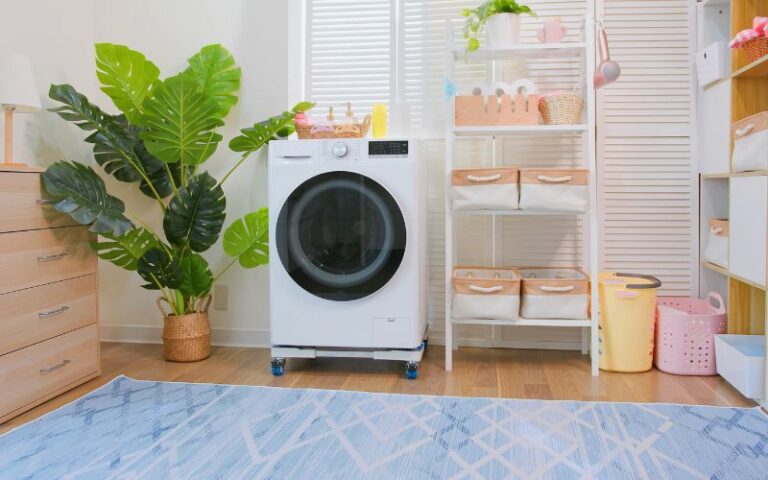Do TV Remotes Use Radio Frequency? (Explained)
Many home electronic devices use radio frequency to transmit signals. It is a standard transmission mode for almost everything you own, from garage doors to cell phones.
The general problem with most TV remotes is not picking up the signal.
So you may wonder if the radio frequency technology extends to something other than the TV remote.
Read this article thoroughly to understand if your TV remote uses radio frequency and how it works.
TV remotes use radio frequency, making it easy to operate the television. In addition, Radiofrequency TV remotes can send signals from a distant position. The remote control sends a signal to your TV through radio waves, and the TV accepts the signal, then interprets it into a command to obey.
Do Television Remotes Use Radio Frequency?

Television remotes do use radio frequency. However, only a few remote controls can use radio frequency.
Radio frequency remote controls are a technology gradually taking over the traditional television remote frequency mechanism.
Radio frequency remote controls use radio waves to send and receive signals between your television and remote control, functioning according to these waves.
The significant advantage of televisions using radio frequency is transmitting signals from a long distance without any obstruction.
Unlike before, you must be in close range or directly in front of your television before you can press the remote to transmit signals.
Besides your television, much electronic equipment also uses radio frequency remote controls. So, it is a standard technology you don’t need to worry about.
How Do Radio Frequencies Work on TV Remotes?
Radio frequencies work on television remotes by transmitting corresponding radio waves for the binary code of individual buttons on the remote.
So when you press any button on the remote, the radio waves coming from your remote are equivalent to the binary code for that particular button.
Then, a radio receiver on your television receives the wave signals and interprets them. The television then carries out the command you sent.
The basic summary of this technology is that your remote sends binary codes through radio waves to your television, and the television receives and accepts the codes.
The radio waves give your remote control the advantage of working from a long range.
The waves can travel from 100 feet or more and still reach your television.
Although, radio frequency remotes are suitable for long-range commands. However, technology also has some disadvantages.
The radio frequency remote can get interference from several radio waves from nearby devices such as WiFi routers, cell phones, walkie-talkies, etc.
If every device using radio waves transmits signals simultaneously, the signals will start disturbing each other, and your TV won’t get the small wave signals.
Although this is a significant issue, radio frequency technology has a solution to the issue by allocating different frequencies for each device.
The radio frequency television remote transmits at a unique radio frequency. It also encloses digital address codes in its radio signals.
The address code allows the television to recognize and respond to only the radio signal from the remote. The other devices also have their specific operating frequency.
So, the remote radio frequency doesn’t get any interference, and the television functions correctly irrespective of the number of radio waves around it.
The carrier frequencies for radio frequency remote controls determine the command your TV receives, and the frequency also travels fast.
How Do I Know If My TV Remote Uses Radio Frequency?
You can perform simple physical tests to determine if your TV remote uses radio frequency. The test result will let you know the type of frequency the remote uses.
The tests to determine your TV remote frequency include:
#1. The Distance and Barrier Test
Since radio frequency remotes can travel long-range, you can test this theory on your TV by operating from a distant range.
First, you need to move to a position that is not directly in front of your TV, then press the remote buttons.
You don’t need to point the remote directly towards the TV. Instead, if the TV obeys the command you sent, it means your remote uses radio frequency.
Additionally, you can create a furniture or wall barrier between you and the TV, then press the remote. The TV will respond if it uses radio frequency.
Alternatively, you can cover the front of the remote and press any button. If your TV obeys the command, then the remote uses radio frequency.
#2. Camera Test
You can use your smartphone camera to check if the front of the remote shows a little light when you press it.
For example, a radio frequency TV remote wouldn’t have this light come up.
First, turn on your smartphone camera, then switch it to the front camera. Next, point your remote directly in front of the phone and press any button.
If you see the tiny light, your TV remote doesn’t use radio frequency.
It would be best to use your smartphone camera because you can’t see the light with your bare eyes.
What Other Frequency Do TV Remotes Use?
TV remotes also use infrared frequency to operate. Most television sets use infrared frequency to transmit signals from inception.
It is the old operating technology for TV remotes. The infrared remote uses infrared light to send and transmit signals to the television.
An infrared TV remote control has an LED light in the front, which flashes when you press a button on the remote to operate the TV.
The flashing light helps the remote to send a signal that your television interprets.
The remote control has a transmitter at that flashing end for sending an electromagnetic signal.
The electromagnetic signal from the remote transmitter has a longer wavelength than visible light.
Therefore, the TV has a mechanism to receive this signal and obey your command.
However, the flashing light from the infrared TV remote is not visible to the bare human eyes.
But, the TV remote encloses binary codes in the flashing light. Each button on the remote had a unique binary code representing its command.
When you press any button, the television uses sensors to detect the light from the infrared remote.
Then, the sensors transmit the binary code to the microprocessor inside the TV, and the microprocessor analyses the code and changes it into a command for your TV to obey.
Although, like radio frequency TV remotes, the infrared frequency also sends a signal to the TV.
However, there are major distinguishing factors between the two mechanisms.
The differences between infrared and radio frequency TV remotes are below.
| Infrared Frequency | Radio Frequency |
|---|---|
| It uses electromagnetic signals. | It uses radio waves for signals. |
| You need to be in line of sight with the TV. | You don’t need a line of sight. |
| It is vital to be in close range with the TV. | There is no need to be close to the TV. |
| The maximum range is 30 feet. | The maximum range is 100 feet or more. |
| Barriers affect its transmission. | It can travel through barriers. |
| Electronic devices do not interfere with the signal. | It gets interference from other devices. |
Conclusion
In summary, radio frequency TV remotes are gradually becoming popular because they are excellent for relieving the stress of always pointing your remote towards the television.
However, your TV remote may not use radio frequency because many TVs still use infrared frequency to transmit signals.
